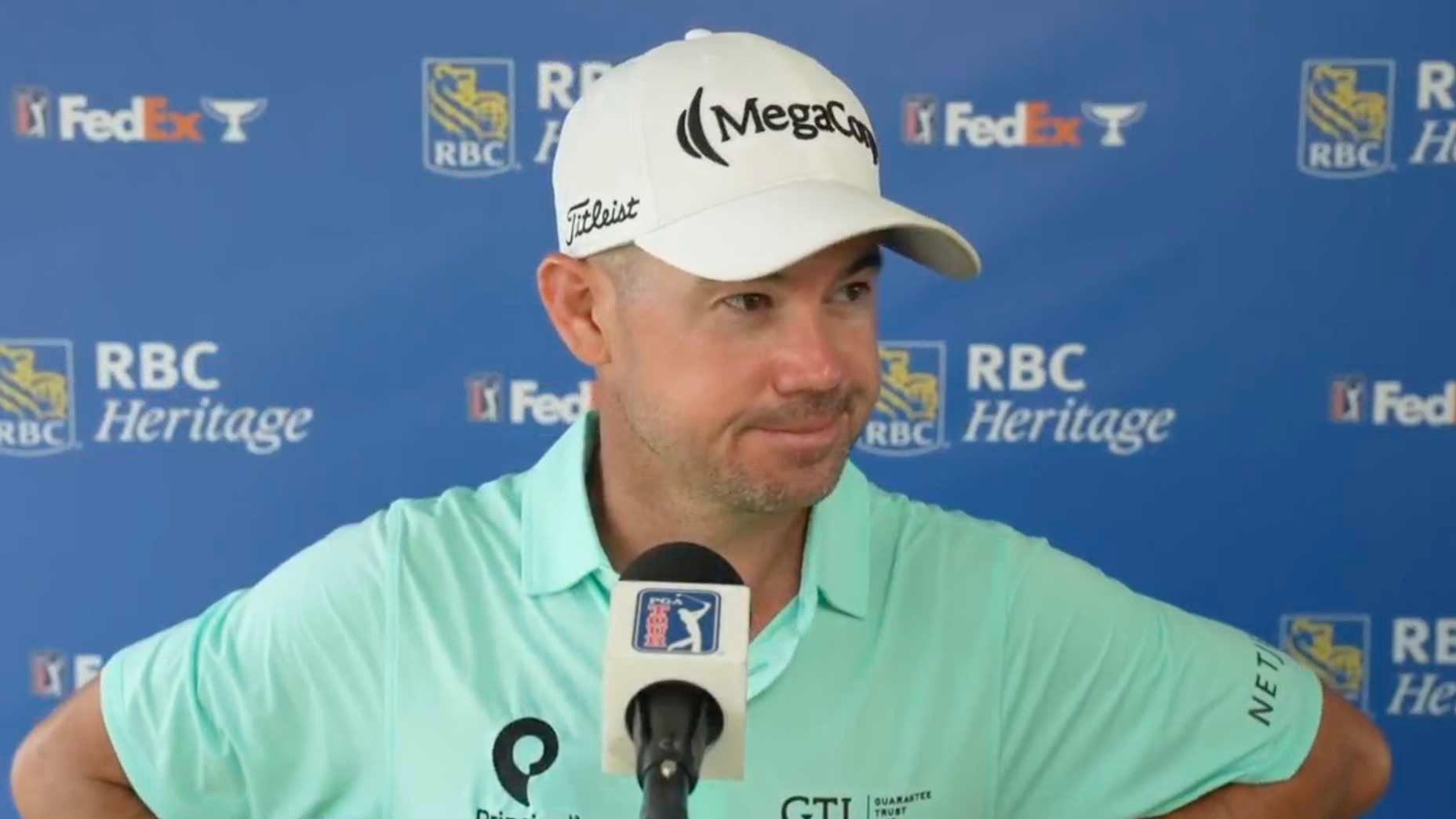
Brian Harman clearly didn’t want to speak with the press after his first round of the RBC Heritage but we’re all better off that he did.
PGA Tour
A total of 15 golfers spoke with the press about their opening rounds at the RBC Heritage Thursday. At a tournament with 69 golfers, that’s plenty! Roughly 22 percent of the field. You had Ludvig Åberg after his sterling 66. You had Rory McIlroy fawning over Åberg’s round in the context of McIlroy’s own 67. You had Collin Morikawa (65) talking about that same secretive swing thought he had during Masters week.
The trend with that group was obvious: Everyone had played well. But there was one outlier among the interviewees. A pro who shot worse than 69 and still spoke: Brian Harman.
Harman had been four under through 16 holes, but finished bogey-double bogey for a one-under 70, coming a week after a back-nine 47 at Augusta National. It’s frustrating stuff. The kind of golf you don’t really care to talk about. But this is a golfer who grew up 30 miles away, in Savannah, made his Tour debut here 20 years ago and brought the Claret Jug to this part of the country just nine months ago. The player whom local media most care about. Harman clearly wasn’t in a chatty mood after his first round, but he came to the mic, anyway, and delivered 45 seconds of gold.
There’s a varied list of words that could be used to describe the interaction, depending on how you look at it: raw, spicy, brief, careless, annoyed, revealing. Chances are, you’ve never seen a 4-question interview wrap up in less than 45 seconds, but now you have! Bill Belichick would be proud. As a viewer, you’re free to be disappointed that a man who plays a game for a living would ever be that curt. Or you could critique the form of the questions. Can you walk us through that hole that has you extremely pissed off?
But let’s pause for a moment before doling out blame. We almost never see this side of the pro game. Most of the golfers on your TV are the ones playing well. Or the ones who normally play well. Åberg is thrilled with his form. It’s traveling everywhere. McIlroy is figuring things out, and “figuring things out” still looks like 67. Morikawa feels like he’s nearing the end of the tunnel.
Harman gave us a peek into what it feels like when you sloppily toss away an otherwise great round…and it’s dinner time…and you’re annoyed…and there’s probably nothing to fix with your game…and you’ve got somewhere to be, but someone wants you to explain your round first. That, my friends, is as relatable as pro golf gets. It’s authentic, and it might be exactly what the PGA Tour needs more of.
Dammit, this game is hard. And one of the enduring aspects of pro golf is that its leaders are concurrently just like us and also not like us at all. We play the same game and they play it impossibly better. But we also run through the same set of emotions doing it. It’s why Joel Dahmen’s “Full Swing” episodes — the first celebrating one of his highest peaks and the second diving into one of his lowest valleys — have been the show’s best. The good golf is fun but sometimes the bad golf is just as important.
We don’t need to make a big deal of this singular moment for Harman, as long as social media critics allow us to move on. He came back Friday and shot 69. There was no 36-hole cut to sweat. He nearly won the Players Championship last month. He’s just fine. But we can appreciate receiving a slice of him we hadn’t really seen before. And were it not for local media requesting Harman, and Harman obliging, we wouldn’t have seen it.
It starts with the PGA Tour Communications team, which take media requests every day of competition. Those staffers play middlemen and women and often receive rolled eyes in response. Do I have to? No, you don’t. But maybe you should? Pro golf is currently battling through a serious ratings decline this year, and plenty of its leading stars are confused by it. They’ve sat in brainstorming sessions about how to engage new audiences (and re-engage old ones). Evidently, being frank about the Bad Times is a quick way of doing so.
The Tour comms team has created a fantastic platform — one players literally stand on — for pros to speak their minds, positioned just outside the scoring tent, while everything is fresh. Too fresh? The limit does not exist! The result helps us all contextualize these tournaments as scores, conditions and moods change over four or five days.
It calls to mind one of the most viewed press conferences in 2023, when Billy Horschel opened up at the Memorial after shooting a first-round 84. He was the defending champion of the tournament, and it became clear to him that his good golf was 12 months in his rearview and not necessarily ahead of him. He spoke for just six minutes — once again prompted by a newspaper reporter — and was brought to tears.
Horschel’s words struck a chord. The Tour’s original video post was viewed 1.7 million times on Twitter, but my coworker’s post (above) was viewed more than 3 million times. Horschel allowed himself to be publicly vulnerable, and was embraced for his transparency about where he felt his swing was taking him. And you know what? It helped him heal.
“The outreach, the people that reached out to me afterwards,” Horschel said two months later. “I just could never imagine family, friends, people in business, athletes — who’s who — text me and tell me how much they care for me and everything. So from that moment, it’s just been a surreal moment and I could never imagine something like that going down that way.”
Harman is nowhere near where Horschel was, but just two bad holes can get these boys running hot. Their responses in those “quick quotes” areas are as revealing as anything we receive in this age of over-manipulated communication. If he charges into contention this weekend, that video will continue to inform everything. It doesn’t feel good to play the golf he played late Thursday. It has to feel worse to have to talk about it, but it colors everything for everyone — and not just the media, but the fans, too. All those eyes and ears the players keep saying they want to connect with.








